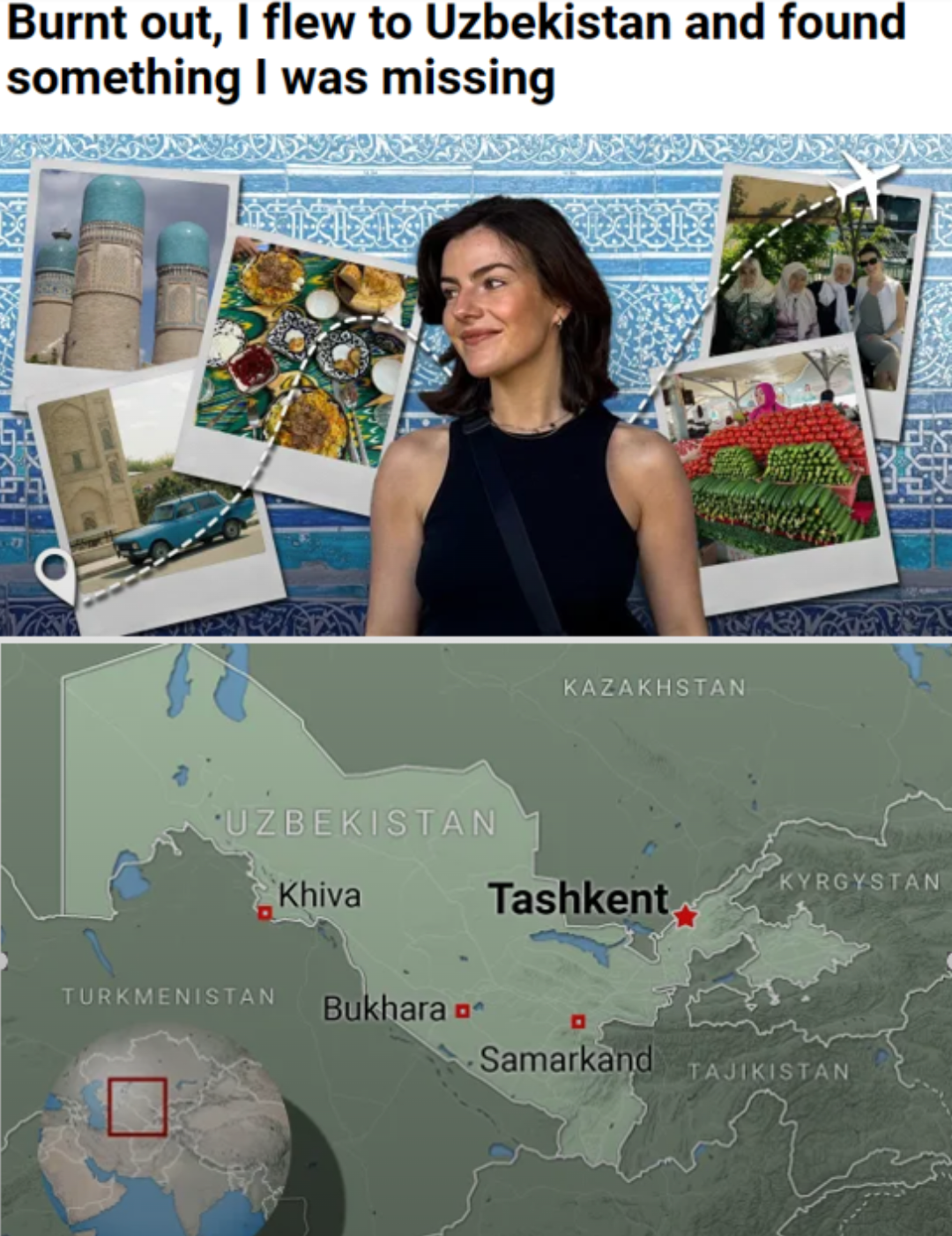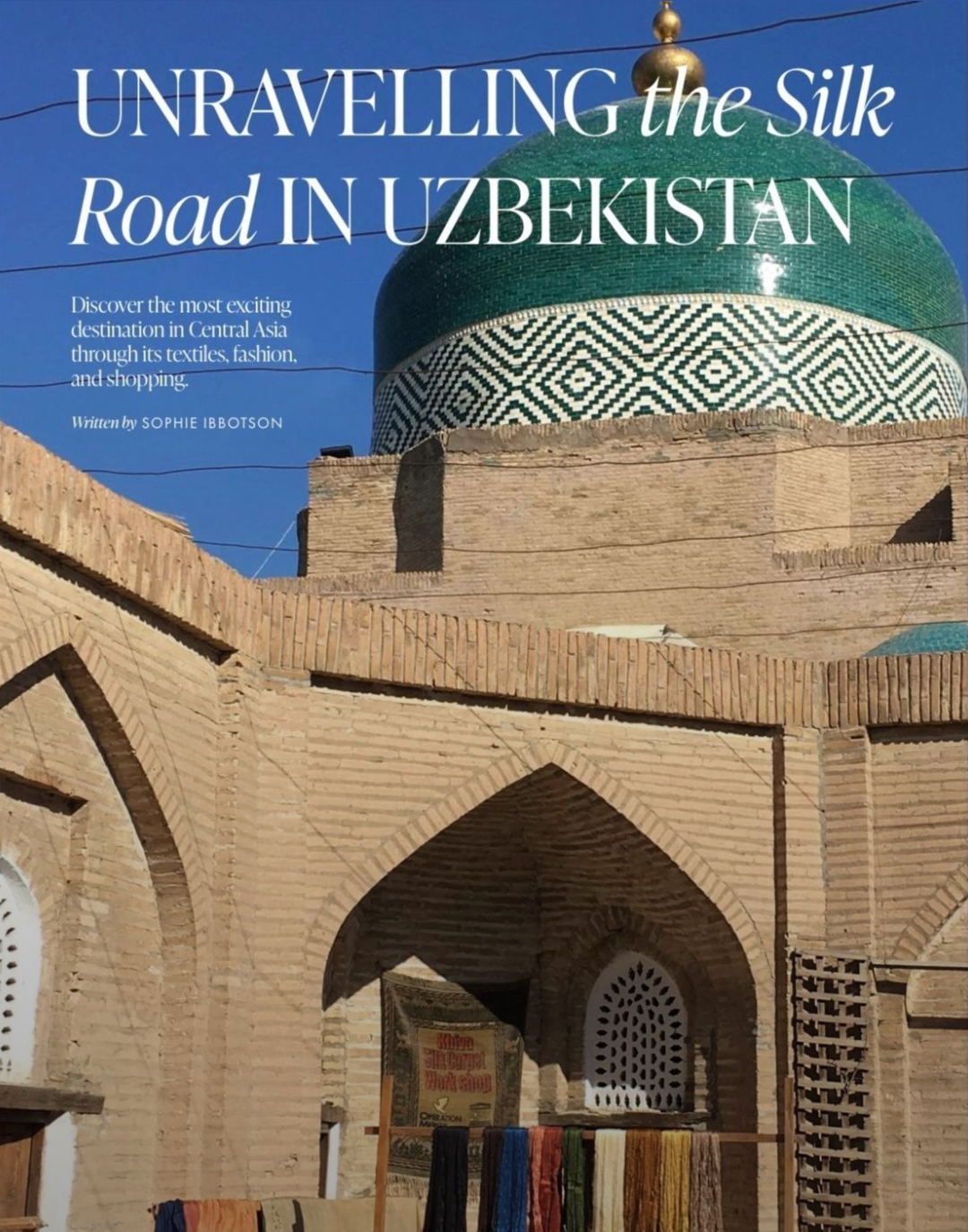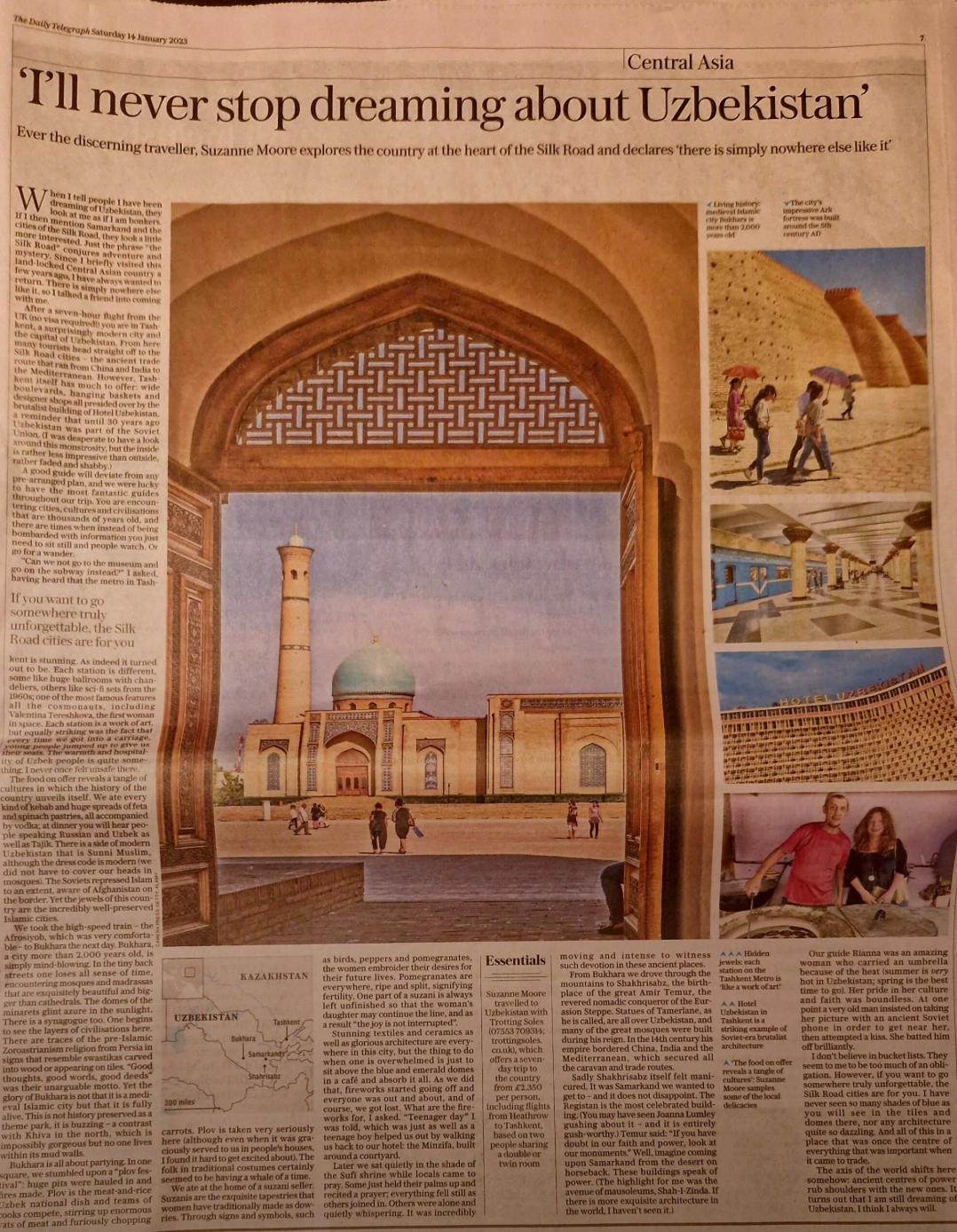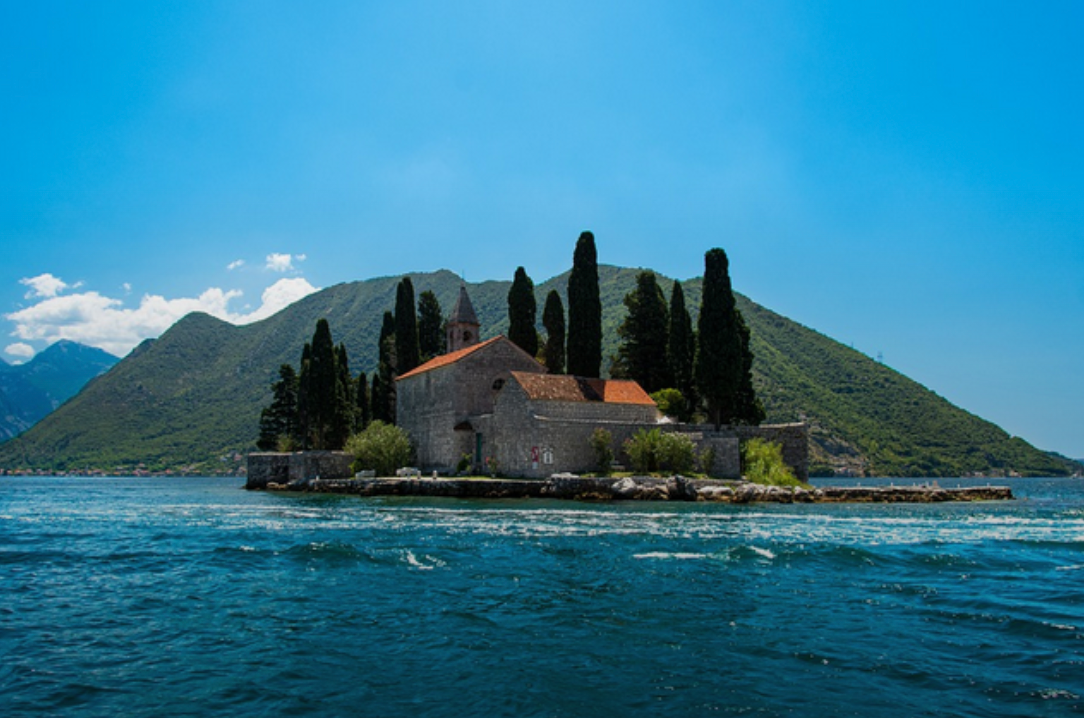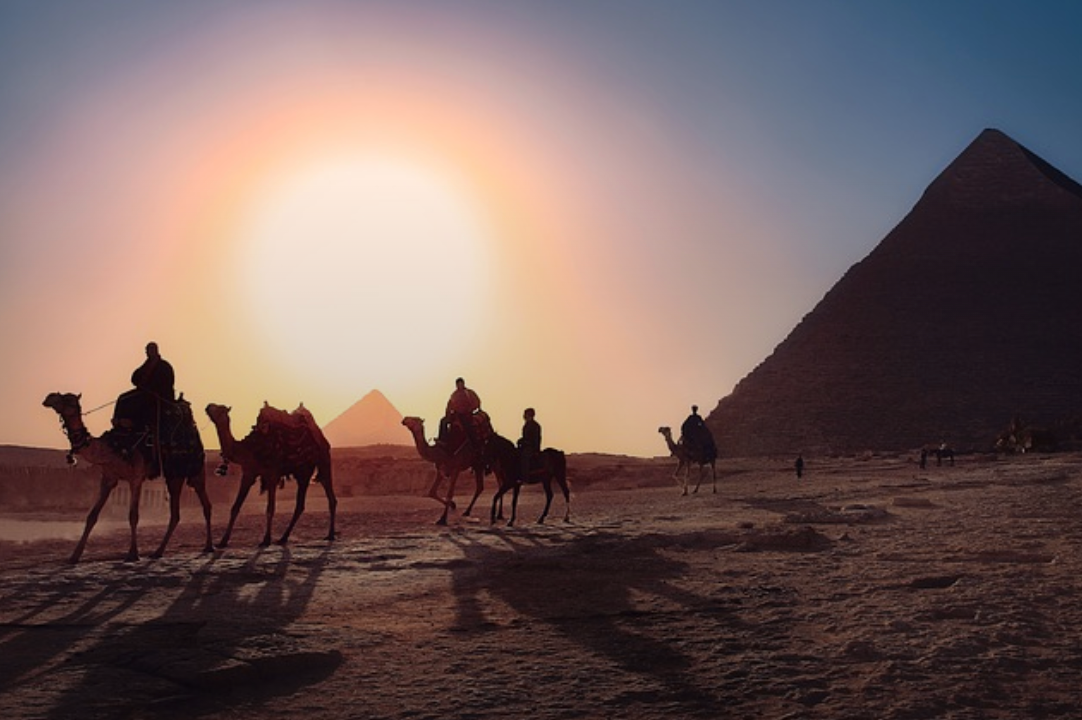Uzbekistan
ICONS OF THE SILK ROAD
If you dream of travelling the Silk Roads, Uzbekistan is the obvious place to start. In this blog you will be introduced to iconic sites and experiences which will bring those dreams to life.
Uzbekistan is the heart of the Silk Roads, not only the geographical centrepoint of this international web of trading routes but also a destination which encapsulates so many of the features which have come to symbolise the Silk Roads in popular imagination. It is no wonder that classic literature about this region such as James Elroy Flecker’s The Golden Journey to Samarkand , Robert Byron’s The Road to Oxiana , and Ella Maillart’s Turkestan Solo all centre the sites and people of Uzbekistan above those of neighbouring states: there is such a wealth of history, of culture here to explore.
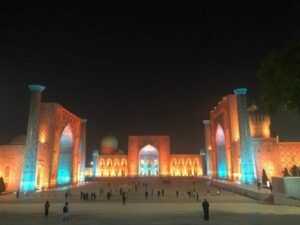
If you think of the Silk Roads, the chances are that the first thing which comes to mind are the magnificent monuments, mosques, madrassas, minarets, and mausoleums bejewelled with turquoise and blue glazed tiles. Stretching across Uzbekistan, from Khiva in the west to Kokand in the east, there are hundreds of such buildings, decorated by generations of skilful artisans. My particular favourites include the striped Kalta Minar in Khiva’s Ichan Qala; the Khudayar Khan Palace in Kokand; and the architectural masterpiece which is the Shah-i Zinda ensemble of tombs. But the one monument every visitor is desperate to see more than any other is the Registan — a trio of elegantly decorated madrassas — in the middle of Samarkand. Together these buildings represent the pinnacle of achievement in Islamic architecture, and from every angle the view is unforgettable.
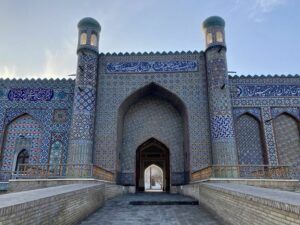
The Silk Roads were a conduit for new ideas as well as people and goods, so religions spread quickly along the network. Many world faiths are thus represented in Uzbekistan. The oldest temples and burials are Zoroastrian; see them in the desert fortresses of Karakalpakstan. Around Termez you can visit the Buddhist monasteries of Fayaz Tepe and Kara Tepe. The country’s Islamic cultural heritage is incredibly rich too, with many Muslims coming here on pilgrimage. Imam Al Bukhari, collector of the Hadiths, is buried near Samarkand, and in Bukhara you will find the shrine of Bahauddin Naqshbandi, an important Sufi saint. The Bukharian Jews are thought to be one of the world’s oldest Jewish community, and still have their own synagogue in Bukhara’s Old City; and there are plenty of churches belonging to the Orthodox, Catholic, and Lutheran denominations.
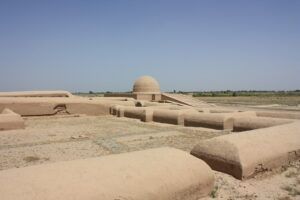
In the heyday of the Silk Roads, merchants, pilgrims, and other travellers journeyed on foot, their baggage tied to the backs of pack animals. In many cases, these were camels, strong, stable vehicles for crossing Central Asia’s deserts. You can still see herds of camels roaming as they’re bred for their milk and meat, but the best way to get up close to one is on a camel ride. Perhaps the most scenic location for a sunset camel ride is from the Aidar Yurt Camp near Aidarkul. You can ride from the yurts over dunes towards the lake shore, then return to the yurt camp to listen to folk singers performing around the bonfire.

The purpose of the Silk Roads was to bring an enticing variety of products to sell in bazaars: fresh fruits and vegetables; tea and spices; fine textiles; and other sought after goods. These markets are still the commercial anchors of Uzbekistan’s cities today. The largest and most impressive sites are Chorsu Bazaar in Tashkent and Siyob Bazaar in Samarkand, but even the smallest town will have a lively collection of traders hawking their wares. Whether or not you want to buy anything, visiting a bazaar in Uzbekistan is a must for the atmosphere, the cultural immersion, and the people watching.

Everything you eat in Uzbekistan has been influenced in some way by the Silk Roads. Ingredients and recipes alike travelled along the trading routes. Many of the names will be familiar: plov — Uzbekistan’s rice-based national dish — is the sister of pilau and paella. The baked and stuffed pastry Uzbeks call a samsa is better-known elsewhere as a samosa, and you’ll certainly recognise the noodle dish laghman: it is Uzbekistan’s version of spaghetti! The food which you will eat more often than any other, though, is freshly baked bread. Its mouth-watering smell wafts thorough residential streets and markets, and you may well find yourself craving a slice long after you have returned home.
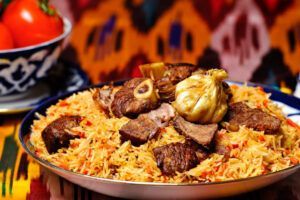
Every tour Trotting Soles designs in Uzbekistan is tailor made, creating a unique experience for every visitor. Whether your perfect trip is food-themed, architecturally-inspired, or focused on pilgrimage, they can curate an unforgettable experience. Contact Trotting Soles today to start planning your journey to the heart of the Silk Roads.
Author: Sophie Ibbotson
Sophie is a Central Asia specialist who has worked in the region since 2008. She is the author of Bradt’s guidebooks to Uzbekistan, Tajikistan, and Karakalpakstan; Uzbekistan’s Ambassador for Tourism to the UK; and Chairman of the Royal Society for Asian Affairs.
